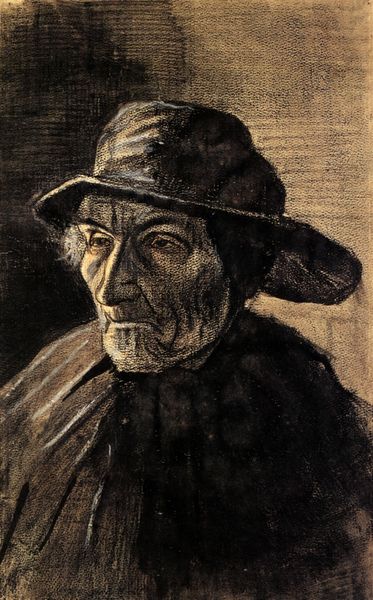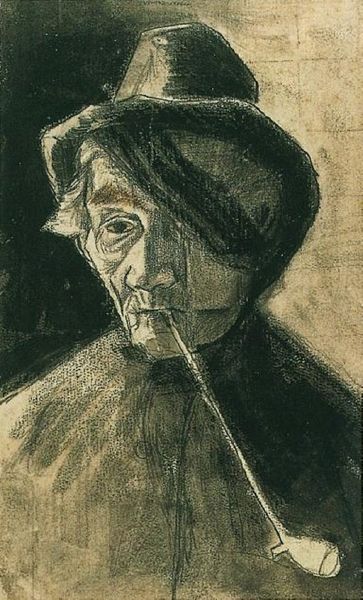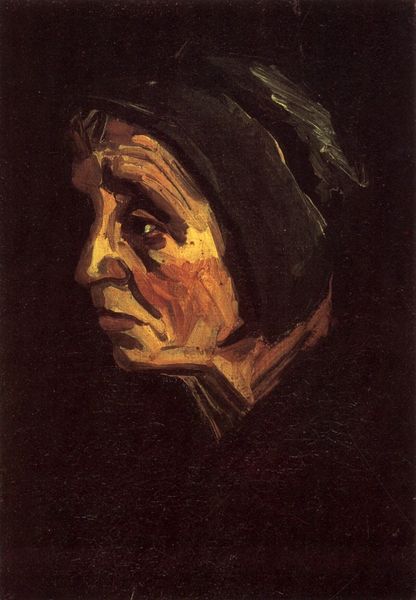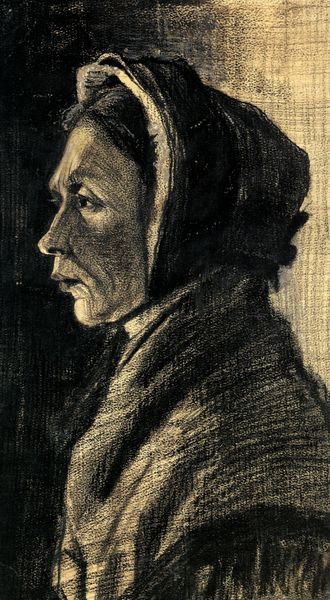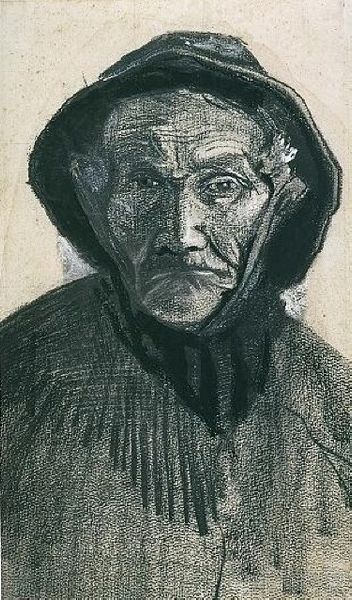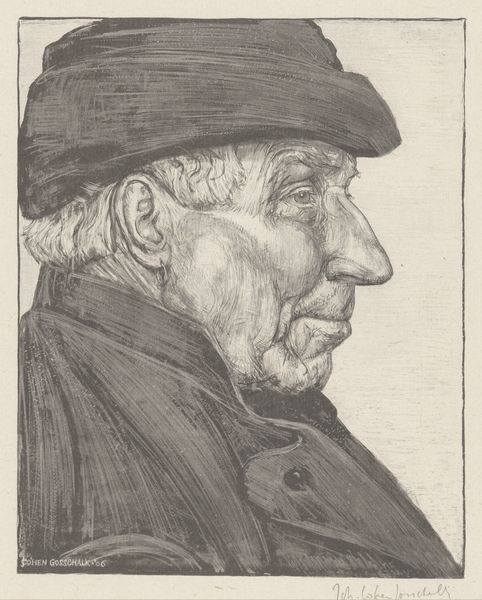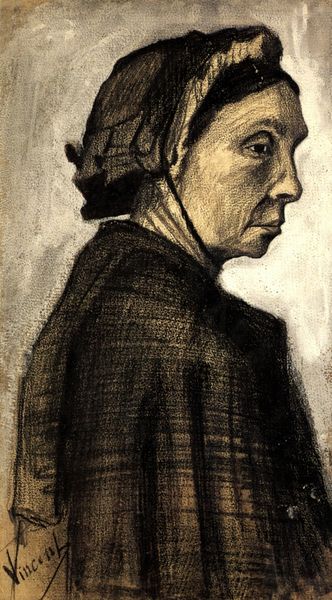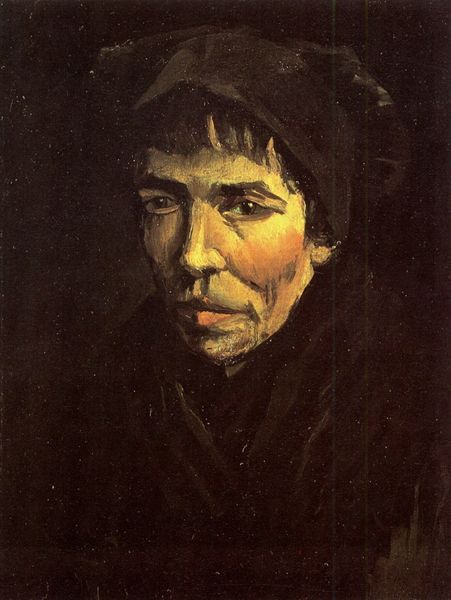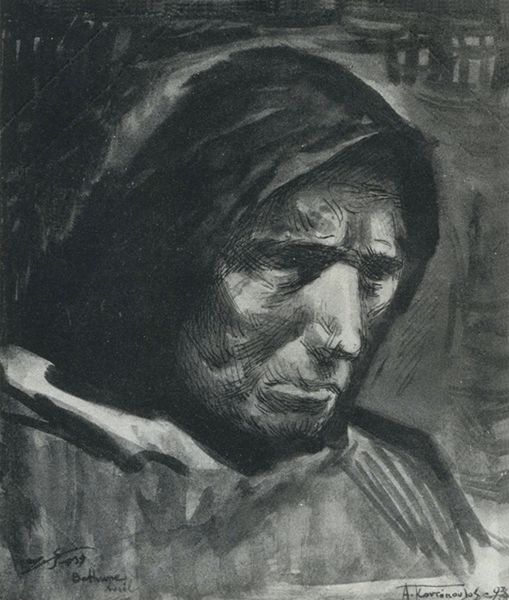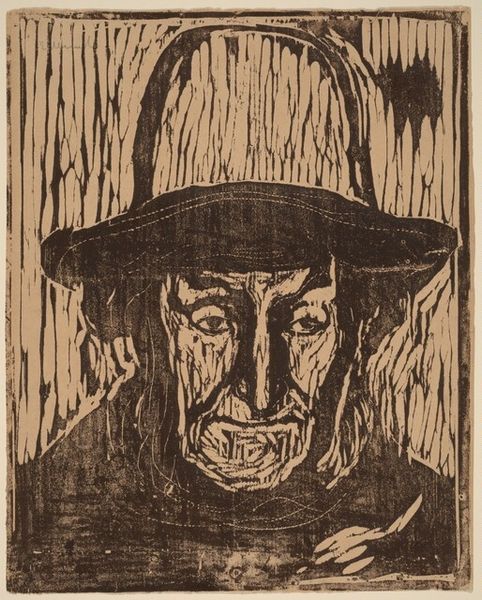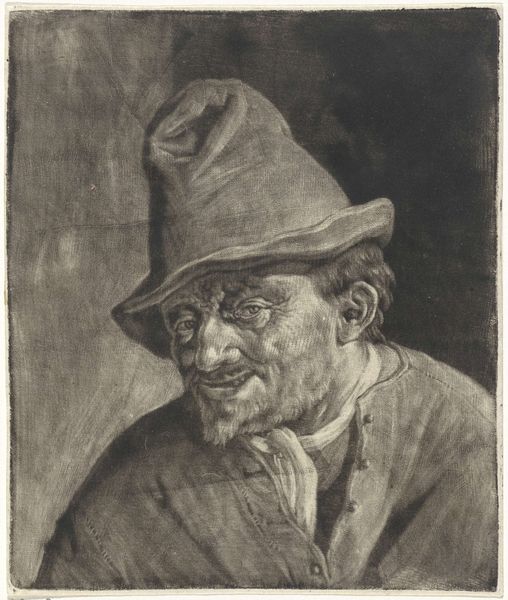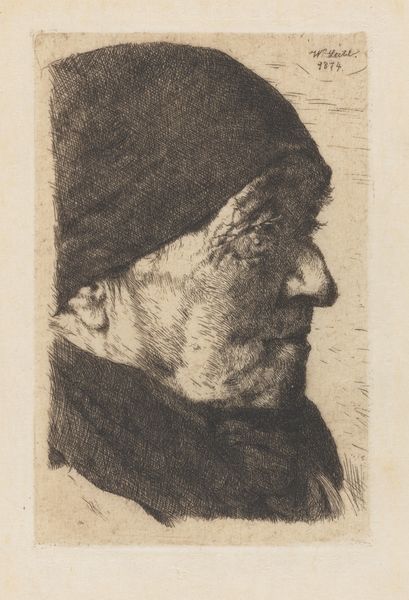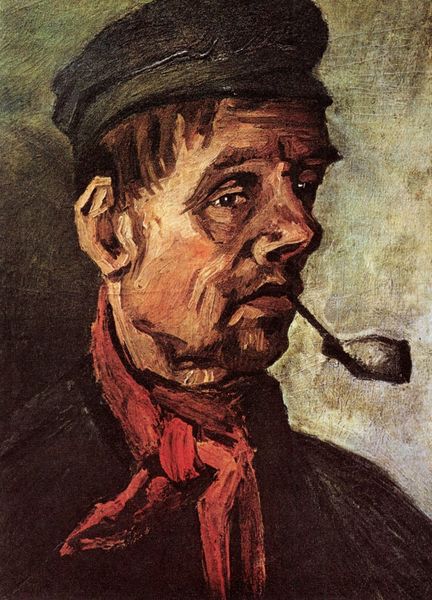
drawing, ink, pencil, charcoal
#
portrait
#
drawing
#
charcoal drawing
#
ink
#
pencil
#
portrait drawing
#
charcoal
#
post-impressionism
#
realism
Copyright: Public domain
Editor: This is Van Gogh’s "Head of a Fisherman with a Fringe of Beard and a Sou'wester," from 1883, made with pencil, charcoal, and ink. It's such a stark, almost severe image. The textures seem very tactile, rough. What do you see in the composition that contributes to that feeling? Curator: Precisely. Observe the dynamic interplay of light and shadow. Van Gogh masterfully employs chiaroscuro, creating a dramatic contrast that emphasizes the contours of the fisherman's face and hat. Note how the angular lines and the dense hatching contribute to a sense of solidity, of physical presence. Consider the restricted palette – the subtle variations in tone generate depth and dimension, but also a certain somberness. Editor: So the stark contrasts aren't just representational; they're also structural elements creating the mood? Curator: Indeed. It is not simply a likeness, but an exploration of form through light and shadow. Think of semiotics—what message might we derive from Van Gogh’s careful delineation of each crease and furrow? Are these just realistic details, or symbols of a hard-won life? Editor: I see what you mean. The details aren't just details; they build meaning within the overall form. It makes me think about how much can be said with very simple materials. Curator: Precisely. Through careful manipulation of line, tone, and texture, Van Gogh transforms humble materials into a powerful statement about the human condition. Do you find the realism engaging or distancing? Editor: That’s an interesting question, perhaps the rough textures make him very present, the gaze of the fisherman certainly looks very imposing. This has been so helpful! Curator: Likewise. Considering the internal structure of such artworks is truly illuminating.
Comments
No comments
Be the first to comment and join the conversation on the ultimate creative platform.
